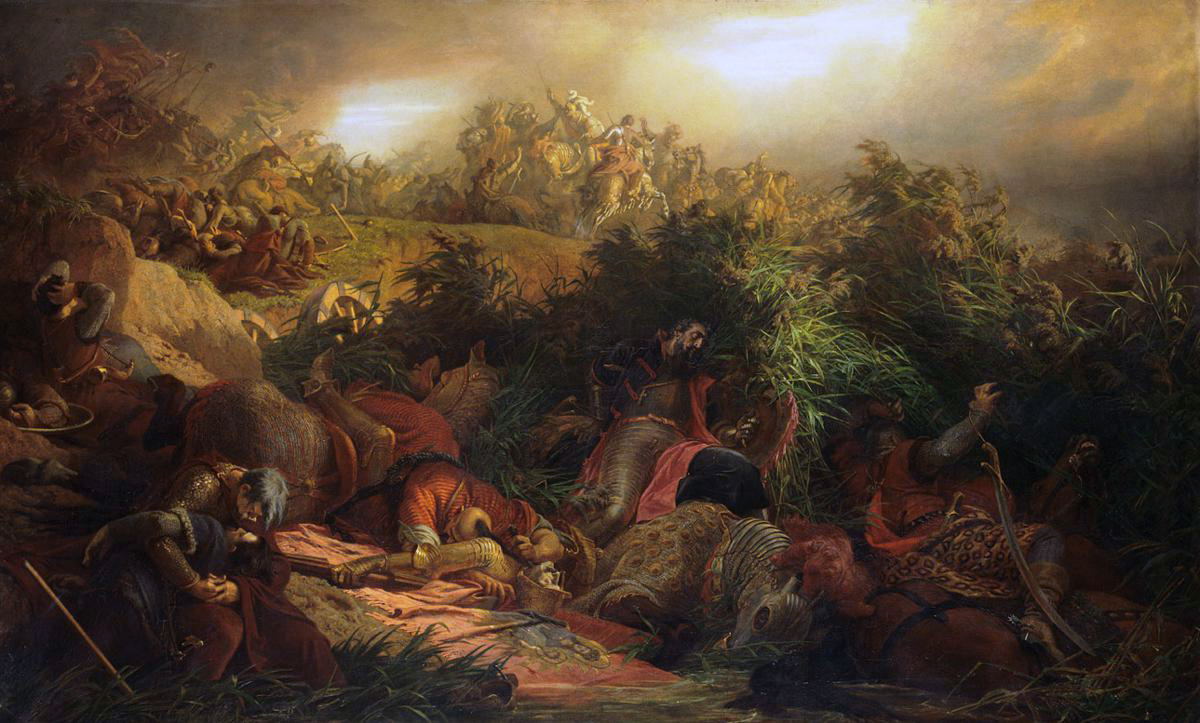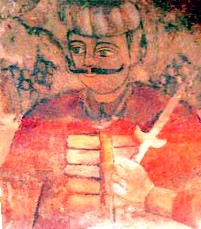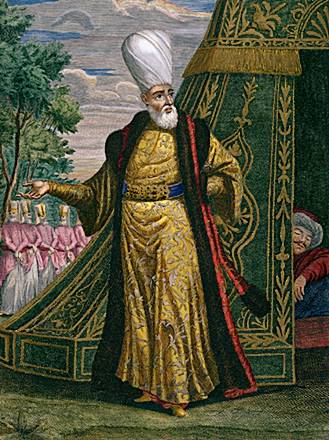|
Deli (Ottoman Troops)
Deli (from Turkish ''deli'', meaning "mad, wild, daring") were a Turkish light cavalry unit within the Ottoman Empire. Their main role was to act as front-line shock troops, also acting as personal guards for high-level Ottoman officials in the Rumeli during peacetime. History The first Delis were created by the Bosnian and Semendire governors. Gazi Husrev-beg was the leader most associated with these troops, who employed about 10,000 of them. Due to the efficiency of Husrev-beg, other district (ie frontier and inland) governors of Rumelia began to imitate him. The majority are Turks and they were chosen from among the peoples living in Rumelia. The unit was first established in Rumelia Eyalet around the middle of the 15th century to create a force to protect the borders of the empire in the Balkans and came to full power around the 16th century. The unit is usually confused in historical records with the Akinji, both being light cavalry units and being part of Eyalet sol ... [...More Info...] [...Related Items...] OR: [Wikipedia] [Google] [Baidu] |
Light Cavalry
Light cavalry comprised lightly armed and body armor, armored cavalry troops mounted on fast horses, as opposed to heavy cavalry, where the mounted riders (and sometimes the warhorses) were heavily armored. The purpose of light cavalry was primarily raid (military), raiding, reconnaissance, screening (tactical), screening, skirmishing, patrolling, and tactical communications. Prior to the 17th century they were usually armed with swords, spears, javelins, or bow and arrow, bows, and later on with Sabre, sabres, pistols, shotguns, or carbines. Light cavalry was used infrequently by Ancient Greece, Ancient Greeks (who used hippeis such as prodromoi or sarissophoroi) and Ancient Rome, Ancient Romans (who used auxiliaries (Roman military), auxiliaries such as Numidian cavalry, equites Numidarum or equites Maurorum), but were more common among the armies of Eastern Europe, North Africa, West Asia, Central Asia, and East Asia. The Arabs, Cossacks, Hungarian people, Hungarians, Hu ... [...More Info...] [...Related Items...] OR: [Wikipedia] [Google] [Baidu] |
Eyalet
Eyalets (, , ), also known as beylerbeyliks or pashaliks, were the primary administrative divisions of the Ottoman Empire. From 1453 to the beginning of the nineteenth century the Ottoman local government was loosely structured. The empire was at first divided into states called eyalets, presided over by a beylerbey (title equivalent to duke in Turkish and Amir al Umara in Arabic) of three tails (feathers borne on a state officer's ceremonial staff). The grand vizier was responsible for nominating all the high officers of state, both in the capital and the states. Between 1861 and 1866, these eyalets were abolished, and the territory was divided for administrative purposes into vilayets (provinces). The eyalets were subdivided into districts called livas or sanjaks, each of which was under the charge of a pasha of one tail, with the title of mira-lira, or sanjak-bey. These provinces were usually called pashaliks by Europeans. [...More Info...] [...Related Items...] OR: [Wikipedia] [Google] [Baidu] |
Special Forces
Special forces or special operations forces (SOF) are military units trained to conduct special operations. NATO has defined special operations as "military activities conducted by specially designated, organized, selected, trained and equipped forces using unconventional techniques and modes of employment". Special forces emerged in the early 20th century, with a significant growth in the field during World War II, when "every major army involved in the fighting" created formations devoted to special operations behind enemy lines. Depending on the country, special forces may perform functions including Airborne forces, airborne operations, counter-insurgency, counter-terrorism, foreign internal defense, Covert operations, covert ops, Direct action (military), direct action, Hostage crises, hostage rescue, high-value targets/Manhunt (military), manhunt, intelligence, surveillance, target acquisition, and reconnaissance, intelligence operations, Mobility (military), mobility o ... [...More Info...] [...Related Items...] OR: [Wikipedia] [Google] [Baidu] |
Ottoman Army
The Military of the Ottoman Empire () was the armed forces of the Ottoman Empire. It was founded in 1299 and dissolved in 1922. Army The Military of the Ottoman Empire can be divided in five main periods. The foundation era covers the years between 1300 (Byzantine expedition) and 1453 ( Conquest of Constantinople), the classical period covers the years between 1451 (second enthronement of Sultan Mehmed II) and 1606 ( Peace of Zsitvatorok), the reformation period covers the years between 1606 and 1826 ( Vaka-i Hayriye), the modernisation period covers the years between 1826 and 1858 and decline period covers the years between 1861 (enthronement of Sultan Abdülaziz) and 1918 ( Armistice of Mudros). The Ottoman army is the forerunner of the Turkish Armed Forces. Foundation period (1300–1453) The earliest form of the Ottoman military was a steppe-nomadic cavalry force.Mesut Uyar, Edward J. Erickson, ''A Military History of the Ottomans: From Osman to Atatürk'', Pleager Se ... [...More Info...] [...Related Items...] OR: [Wikipedia] [Google] [Baidu] |
Military Units And Formations Of The Ottoman Empire
A military, also known collectively as armed forces, is a heavily Weapon, armed, highly organized force primarily intended for warfare. Militaries are typically authorized and maintained by a sovereign state, with their members identifiable by a distinct military uniform. They may consist of one or more military branches such as an army, navy, air force, space force, marines, or coast guard. The main task of a military is usually defined as defence of their state and its interests against external armed threats. In broad usage, the terms "armed forces" and "military" are often synonymous, although in technical usage a distinction is sometimes made in which a country's armed forces may include other paramilitary forces such as armed police. Beyond warfare, the military may be employed in additional sanctioned and non-sanctioned functions within the state, including internal security threats, crowd control, promotion of political agendas, emergency services and reconstructi ... [...More Info...] [...Related Items...] OR: [Wikipedia] [Google] [Baidu] |
Suleiman The Magnificent
Suleiman I (; , ; 6 November 14946 September 1566), commonly known as Suleiman the Magnificent in the Western world and as Suleiman the Lawgiver () in his own realm, was the List of sultans of the Ottoman Empire, Ottoman sultan between 1520 and his death in 1566. Under his administration, the Ottoman Empire ruled over at least 25 million people. After succeeding his father Selim I on 30 September 1520, Suleiman began his reign by launching military campaigns against the Christendom, Christian powers of Central and Eastern Europe and the Mediterranean; Siege of Belgrade (1521), Belgrade fell to him in 1521 and Siege of Rhodes (1522), Rhodes in 1522–1523, and at Battle of Mohács, Mohács in 1526, Suleiman broke the strength of the Kingdom of Hungary in the Middle Ages, Kingdom of Hungary. Presiding over the apex of the Ottoman Empire's economic, military, and political strength, Suleiman rose to become a prominent monarch of 16th-century Europe, as he personally led Arm ... [...More Info...] [...Related Items...] OR: [Wikipedia] [Google] [Baidu] |
Surname-i Hümayun
The Surname-i Hümayun (Ottoman Turkish and ) were albums that commemorated celebrations in the Ottoman Empire in pictorial and textual detail. Such celebrations included mainly imperial weddings and circumcision festivals. These albums were commissioned by the Ottoman Imperial family, usually by the Sultan presiding at the time. The Surnames recount the festivities in order of when the events took place, which includes processions, grand entrances of the Sultan, feasts, entertainers, musicians, dancers, gift giving, firework displays, circumcision and wedding ceremonies. Although many of the Surnames were made to celebrate circumcisions of Ottoman princes, the first Surname was commissioned in 1524 for a wedding ceremony. Importance Many reasons contributed to the formulation of these festival albums. Firstly, by commissioning the albums to be created in celebration of certain processions, it displayed the grandeur of the event. Colourful paintings that filled the pages of the ... [...More Info...] [...Related Items...] OR: [Wikipedia] [Google] [Baidu] |
Nicolas De Nicolay
Nicolas de Nicolay, Sieur d'Arfeville & de Belair, (1517–1583) of the Nicolay (family) was a French geographer. Biography Born at la Grave in Oisans, in the Dauphiné, he left France in 1542 to participate in the Siege of Perpignan (1542), siege of Perpignan which was then held by Emperor Charles V, Holy Roman Emperor, Charles V of Austria. In 1547, he sailed to Scotland where his intervention ended the siege of St Andrews Castle. In 1548, he returned to Scotland to take away Mary, Queen of Scots from Dumbarton Castle, sailing around the west coast of Ireland. He travelled around Germany, Denmark, England, Sweden, Italy, Spain, Greece and Turkey and served in the armies of most of these countries. On his return to France, Henry II of France, Henry II made him Geographer Ordinary and Valet to the Chamber. Around this time, he appears to have made a terrestrial globe that provided the model for the Oterschaden globe of . In 1551, Henry II ordered him to follow Gabriel d'Aramon ... [...More Info...] [...Related Items...] OR: [Wikipedia] [Google] [Baidu] |
Vlad The Impaler
Vlad III, commonly known as Vlad the Impaler ( ) or Vlad Dracula (; ; 1428/31 – 1476/77), was Voivode of Wallachia three times between 1448 and his death in 1476/77. He is often considered one of the most important rulers in Wallachian history and a national hero of Romania. He was the second son of Vlad Dracul, who became the ruler of Wallachia in 1436. Vlad and his younger brother, Radu, were held as hostages in the Ottoman Empire in 1442 to secure their father's loyalty. Vlad's eldest brother Mircea and their father were murdered after John Hunyadi, regent-governor of Hungary, invaded Wallachia in 1447. Hunyadi installed Vlad's second cousin, VladislavII, as the new voivode. Hunyadi launched a military campaign against the Ottomans in the autumn of 1448, and Vladislav accompanied him. Vlad broke into Wallachia with Ottoman support in October, but Vladislav returned, and Vlad sought refuge in the Ottoman Empire before the end of the year. Vlad went to Moldavia in 144 ... [...More Info...] [...Related Items...] OR: [Wikipedia] [Google] [Baidu] |
Wallachia
Wallachia or Walachia (; ; : , : ) is a historical and geographical region of modern-day Romania. It is situated north of the Lower Danube and south of the Southern Carpathians. Wallachia was traditionally divided into two sections, Muntenia (Greater Wallachia) and Oltenia (Lesser Wallachia). Dobruja could sometimes be considered a third section due to its proximity and brief rule over it. Wallachia as a whole is sometimes referred to as Muntenia through identification with the larger of the two traditional sections. Wallachia was founded as a principality in the early 14th century by Basarab I after a rebellion against Charles I of Hungary, although the first mention of the territory of Wallachia west of the river Olt dates to a charter given to the voivode Seneslau in 1246 by Béla IV of Hungary. In 1417, Wallachia was forced to accept the suzerainty of the Ottoman Empire; this lasted until the 19th century. In 1859, Wallachia united with Moldavia to form the Un ... [...More Info...] [...Related Items...] OR: [Wikipedia] [Google] [Baidu] |
Janissaries
A janissary (, , ) was a member of the elite infantry units that formed the Ottoman sultan's household troops. They were the first modern standing army, and perhaps the first infantry force in the world to be equipped with firearms, adopted during the reign of Murad II (r. 1421–1444, 1446–1451). The corps was established under either Orhan or Murad I, and dismantled by Mahmud II in 1826. Janissaries began as elite corps made up through the '' devşirme'' system of child levy enslavement, by which indigenous European Christian boys, chiefly from the Balkans, were taken, levied, subjected to forced circumcision and forced conversion to Islam, and incorporated into the Ottoman army. They became famed for internal cohesion cemented by strict discipline and order. Unlike typical slaves, they were paid regular salaries. Forbidden to marry before the age of 40 or engage in trade, their complete loyalty to the Ottoman sultan was expected. By the 17th century, due to a drama ... [...More Info...] [...Related Items...] OR: [Wikipedia] [Google] [Baidu] |
Mahmud II
Mahmud II (, ; 20 July 1785 – 1 July 1839) was the sultan of the Ottoman Empire from 1808 until his death in 1839. Often described as the "Peter the Great of Turkey", Mahmud instituted extensive administrative, military, and fiscal reforms. His disbandment of the conservative Janissary, Janissary Corps removed a major obstacle to his and his successors' reforms in the Empire, creating the foundations of the subsequent Tanzimat era. Mahmud's reign was also marked by further Ottoman military defeats and loss of territory as a result of nationalist uprisings and European intervention. Mahmud ascended the throne following an Ottoman coups of 1807–1808, 1808 coup that deposed his half-brother Mustafa IV. Early in his reign, the Ottoman Empire ceded Bessarabia to Russia at the end of the Russo-Turkish War (1806–1812), 1806–1812 Russo-Turkish War. Greece waged a Greek War of Independence, successful war of independence that started in 1821 with British, French and Russian su ... [...More Info...] [...Related Items...] OR: [Wikipedia] [Google] [Baidu] |










